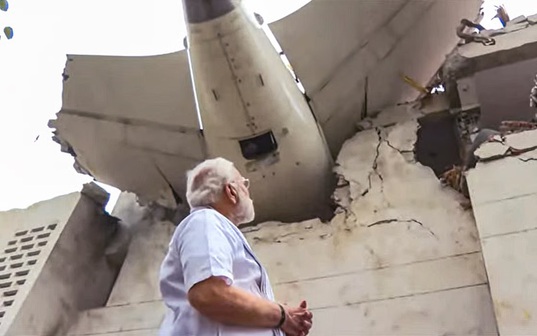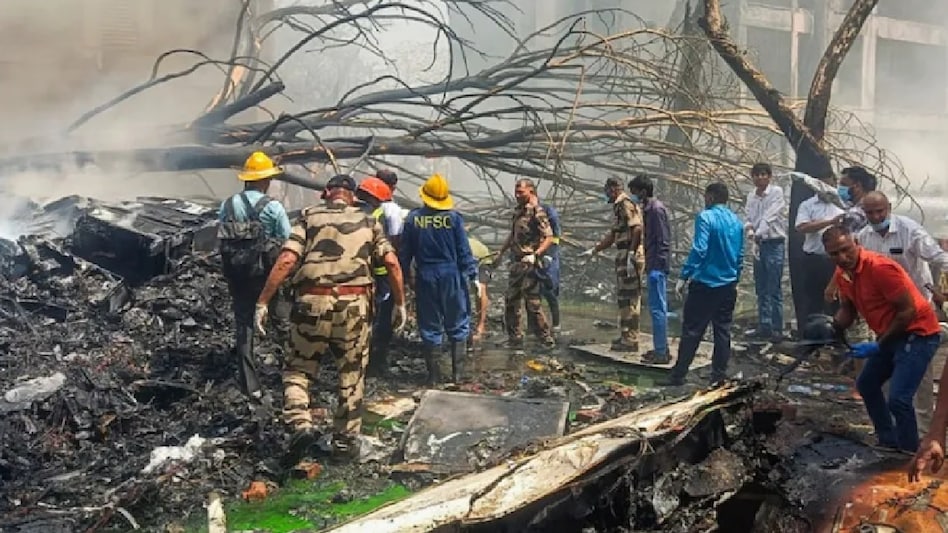On June 12, 2025, Air India Flight 171, a Boeing 787-8 Dreamliner bound for London Gatwick from Ahmedabad, India, crashed just 32 seconds after takeoff, marking one of the deadliest aviation disasters in recent history. The tragedy, which claimed the lives of 241 of the 242 passengers and crew aboard and 19 people on the ground, has left a grieving nation and a global audience seeking answers. A preliminary report released by India’s Aircraft Accident Investigation Bureau (AAIB) on July 8, 2025, provides the first official account of the incident, revealing critical details about the final moments of the flight while deepening the mystery surrounding its cause.

The flight, carrying 230 passengers and 12 crew members, including 169 Indians, 53 Britons, seven Portuguese, and one Canadian, took off from Ahmedabad’s Sardar Vallabhbhai Patel International Airport at 13:38 IST (08:08 UTC). Piloted by Captain Sumeet Sabharwal, 56, with 15,600 flight hours, and First Officer Clive Kunder, 32, with 3,400 hours, the aircraft was deemed airworthy with no reported issues prior to departure. The weather was clear, with light winds and good visibility, and the plane’s weight and configuration were within normal limits. Yet, within seconds of reaching a maximum altitude of 625 feet and an airspeed of 180 knots, catastrophe struck.
According to the AAIB’s 15-page report, the crash was triggered when both engine fuel control switches, located on the throttle control module, moved from the “RUN” to “CUTOFF” position just one second apart at 08:08:42 UTC. This action, typically performed only after landing, starved the aircraft’s GE GEnx-1B engines of fuel, causing an immediate loss of thrust. The cockpit voice recorder captured a chilling exchange: one pilot asked, “Why did you cut off?” to which the other replied, “I did not.” The report does not identify who spoke, noting only that Kunder was the pilot flying, while Sabharwal monitored. Ten seconds later, the switches were returned to “RUN,” triggering an automatic engine relight. One engine began regaining thrust, but the other had not fully recovered when the plane crashed into the hostel block of B.J. Medical College, 1.7 kilometers from the runway, at 08:09:11 UTC.
The impact was devastating. The aircraft, with its nose pitched up eight degrees, struck a tree, then the top of the campus mess hall, detaching its tail before fragmenting across five buildings. The resulting fire destroyed parts of the complex, killing 19 on the ground and injuring 67 others. Miraculously, one passenger, Vishwaskumar Ramesh, a 40-year-old British national of Indian origin, survived when the aircraft broke apart. The wreckage, spread over 37,000 square meters, was later moved to a secure facility for analysis, with both engines quarantined for further examination.

The report eliminates several potential causes. No evidence of bird strikes, fuel contamination, or adverse weather was found. The aircraft’s flaps were correctly set at five degrees, and the landing gear was retracting normally. Maintenance records showed the throttle control module had been replaced in 2019 and 2023, with no prior fuel switch issues reported. However, a 2018 U.S. Federal Aviation Administration (FAA) Special Airworthiness Information Bulletin (SAIB) flagged a potential flaw in the fuel control switches’ locking mechanism on Boeing models, including the 787-8. The bulletin noted that disengaged locks could allow accidental switch movement, though it was not deemed serious enough to mandate inspections. Air India, citing the advisory’s non-mandatory status, did not conduct the recommended checks.
The cockpit audio has fueled intense speculation. The pilots’ confusion over the fuel cutoff suggests neither intentionally moved the switches, yet the report offers no explanation for how they shifted. The switches require deliberate action—lifting a stop-lock mechanism before flipping—making accidental activation unlikely. Theories range from mechanical failure to electrical malfunctions, but the AAIB has not drawn conclusions, emphasizing that the investigation is ongoing. Experts from Boeing, General Electric, and the U.S. National Transportation Safety Board (NTSB) are assisting, with a final report expected in 2026.
Public reaction has been profound. Families of the victims, including that of 23-year-old cabin crew member Maithili Patil, have expressed grief and frustration, demanding clarity. “What do we understand of the report? I just know my daughter is not coming back,” Patil’s mother told the media, capturing the raw pain felt by many. Air India has responded with interim compensation for 147 of the 229 deceased passengers’ families and established a facilitation center in Ahmedabad to process claims. The Tata Group, Air India’s parent company, also launched the AI-171 Memorial and Welfare Trust, pledging 1 crore rupees per victim and support for rebuilding the damaged medical college infrastructure.

The aviation community has urged restraint against premature blame. The Indian Commercial Pilots’ Association condemned media speculation, particularly reports suggesting pilot error or intentional action, as “reckless” and “insensitive.” Experts like Shawn Pruchnicki, a former investigator, warned against assuming deliberate intent, citing the need for comprehensive data, including missing cockpit camera footage. The AAIB itself criticized “selective and unverified” reporting, emphasizing that the preliminary report aims only to outline what happened, not why.
The crash, the first fatal incident involving a Boeing 787 since its 2011 debut, has prompted regulatory action. India’s Directorate General of Civil Aviation (DGCA) ordered inspections of Air India’s 787 fleet starting June 15, focusing on fuel systems and throttle controls. Globally, the tragedy has reignited scrutiny of Boeing, already under fire for past safety issues with other models. Yet, the AAIB found no immediate need for action against the 787-8 or its engines, pending further investigation.
For now, the report leaves more questions than answers. Was it a rare mechanical glitch, an overlooked maintenance issue, or an unforeseen human factor? The haunting cockpit exchange and the sudden fuel cutoff remain at the heart of this mystery, as investigators painstakingly piece together every scorched cable and data point. As the world awaits the final report, the memory of Flight 171’s victims—passengers, crew, and those on the ground—fuels a collective hope for answers and safer skies.




